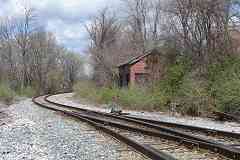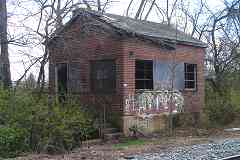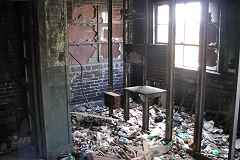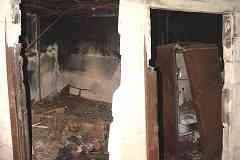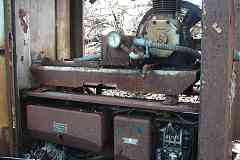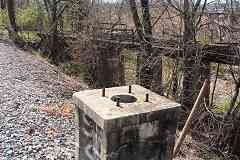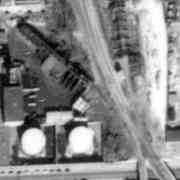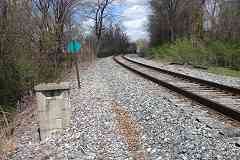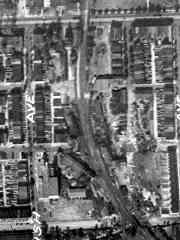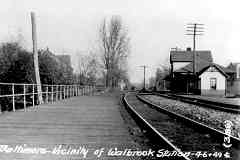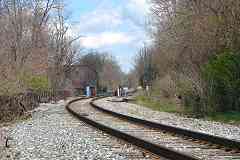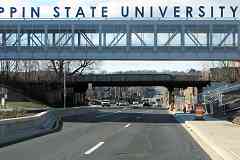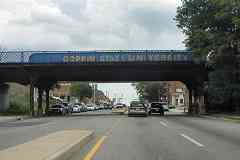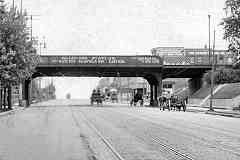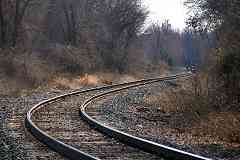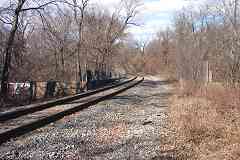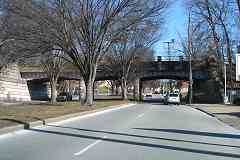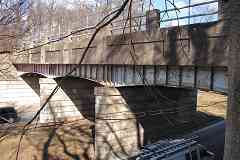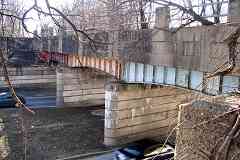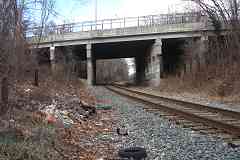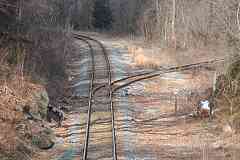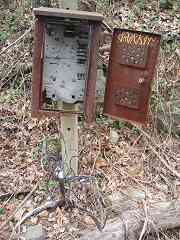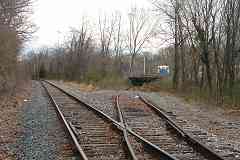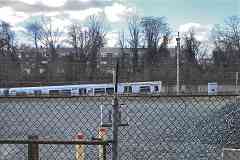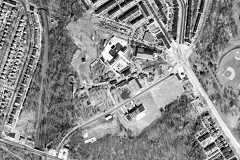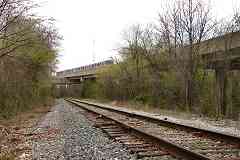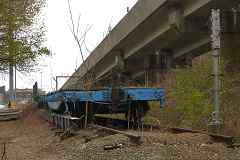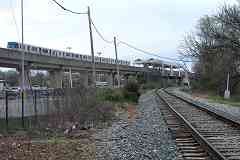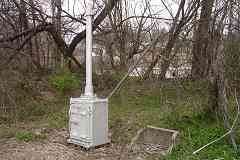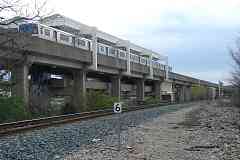|
Metro's yard now occupies the western portion of the site of Carlin's Amusement
Park that had opened during the early 20th century. That's WM running bottom
to top along the left edge of the aerial photo. At Liberty Heights Avenue
(bottom left) the roller coaster made a 180-degree turn.
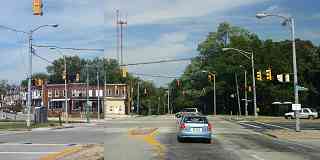 Several roads met at Park Circle (upper right), the park's main entrance. Park
Circle began as a traffic circle adjacent Druid Hill Park (or, in Bawlamerese,
"Droodle Park") but now is a large expanse of blacktop. At photo upper left
you'll find the previously-mentioned pedestrian walkway over the tracks. It
does not appear WM passenger trains stopped here.
Several roads met at Park Circle (upper right), the park's main entrance. Park
Circle began as a traffic circle adjacent Druid Hill Park (or, in Bawlamerese,
"Droodle Park") but now is a large expanse of blacktop. At photo upper left
you'll find the previously-mentioned pedestrian walkway over the tracks. It
does not appear WM passenger trains stopped here.
After fire destroyed its skating rink, in 1958 Carlin's morphed itself into a
drive-in theater, the only one within Baltimore City. It survived until 1977
followed soon thereafter by Metro construction and then operation that began during
1983. Other parts of the former park now see industrial use.
Links:
Baltimore amusement parks (scroll down),
drive-in theater,
Cinema Treasures entry,
Bawlamarese Lexicon
| 